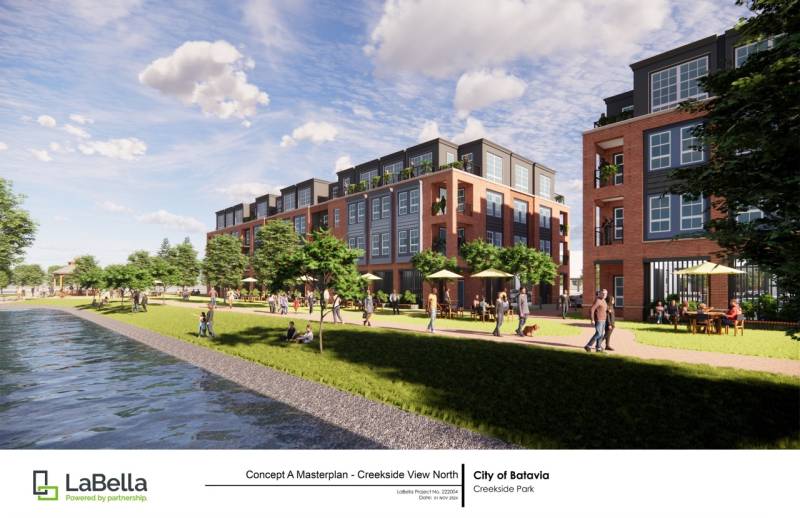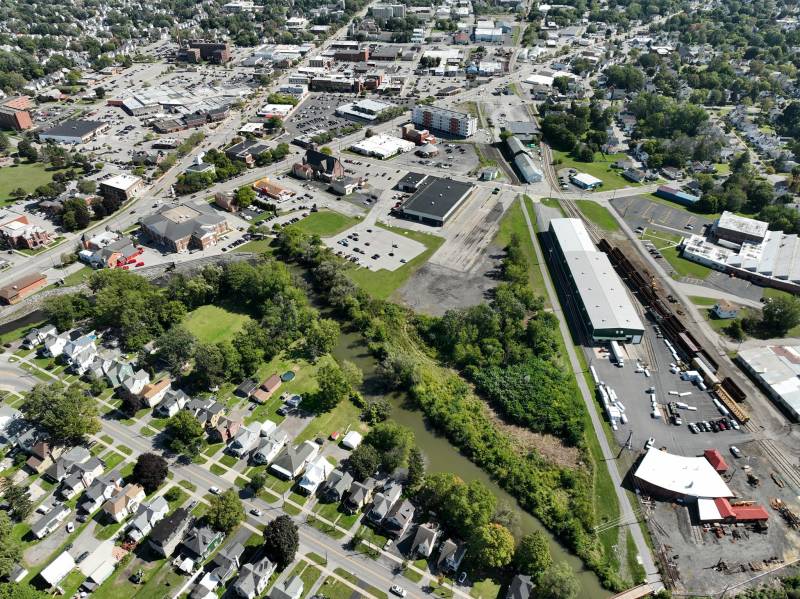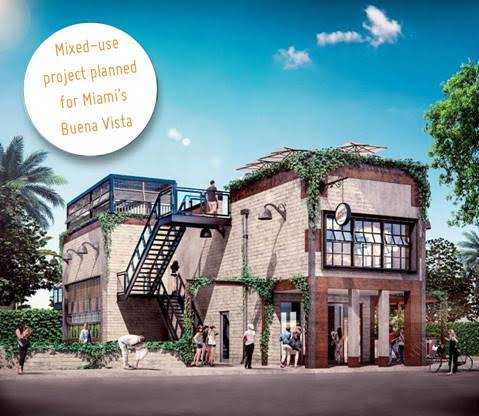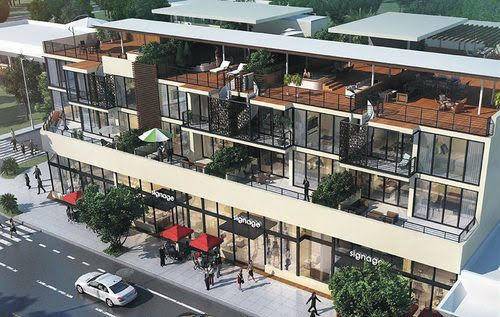Got some time? New York State DEC invites comments about Batavia Creekside Park

If you have thoughts or ideas about the prospective development of land along Tonawanda Creek near Evans Street on the city’s south side, the state Department of Environmental Conservation has opened the window for comments during the next month.
Known as Batavia Creekside Park Development, located at 26 and 60 Evans St., Batavia, the property, under the direction of the city, Batavia Development Corp., and Director of Economic Development Tammy Hathaway, has been submitted for a Brownfield Cleanup Program application to the state agency.
Part of DEC’s protocol is to allow the public to weigh in on any potential project that may take place on the property. Hathaway said several links are available to review history, research and maps for the site as BDC pursues what is believed to be a future valuable housing asset.
“A key aspect of the BDC’s mission is to identify underutilized real estate within the city for potential redevelopment. Moving a piece of potentially contaminated land through the cleanup program ultimately improves its condition and unlocks its potential for safe use,” she said Friday. “As shared in previous months, the Brownfield Opportunity Area steering committee brainstormed potential uses for the Creek Park property and concluded that its highest and best use would be for housing, a critical need in our community.”
When asked if she recommended certain reading material for folks, Hathaway found that hard to answer, “because I find all of it interesting.”
“The real estate reports date back to when I was a teenager, and give a 450-page history of the property,” she said. “Reading through these and seeing what once occupied the property verifies the reason why the parcel requires attention to improve its condition for reuse.”
Before diving in, a reminder about what a Brownfield Cleanup Program is:
- Designed to encourage private-sector cleanups of brownfields and to promote their redevelopment as a means to revitalize economically blighted communities.
- This is an alternative to “greenfield” (land not previously developed or contaminated) development. It is intended to remove some of the barriers to and provide tax incentives for the redevelopment of brownfields.
- An incentive and catalyst for the cleanup and redevelopment of more than 500 contaminated sites statewide since 2003. There are more than 550 active sites in the program.
Research dates back to 1990, when a walking inspection of the site found the topography flat except for an alluvial terrace and steep slope near Tonawanda Creek; few, if any, buildings that have ever been constructed on the site had a lower floor or basement. The railroad roundhouse on the southern-most parcel apparently had a recessed area from which railroad personnel could inspect the steam-powered locomotives.
Several site sections have exposed concrete structures where buildings or other structures were once located. Compared to local terrain, the northwestern-most portion of the site appears slightly lower in elevation and is likely subject to periodic flooding.
Existing above- and below-grade utility lines are present on-site. Trees and shrubs cover the lower terrace area north of the existing railroad grade.
Because the study was completed during winter, no distressed vegetation was observed on site.
A potentially contaminated discharge was observed flowing out of the pipe located just north of the main storm sewer on Tonawanda Creek just downstream of Dam 2. Though this pipe is north of the site, its source has not been determined.
This pipe could be an old outfall acting as a discharge conduit for local groundwater. This is feasible since the soils in this area are very permeable.
Nearly 40 interviews were conducted with neighbors and past employees — 14 former Doehler-Jarvis employees, one engineer presently working for NL industries, four former employees of the railroad companies, and 20 others, city historian, neighbors, a member of the Democratic Committee, U.S. Army Corps of Engineers, Hazardous Waste Remediation Division of DEC, Genesee County Legislature, IDA, Planning Department, Batavia Town Supervisor, City of Batavia Water and Sewer Department, engineering, zoning, inspection and fire departments.
Not one was observed or familiar with any on-site dumping by Doehler Die Cast Company or Doehler-Jarvis. A few were familiar with on-site dumping of cinders/ash from coal-fired locomotives used by railroad companies prior to the use of diesel-powered engines along railroad spurs and near the creek.
A few were familiar with neighbors dumping household waste on-site several years ago, evidenced by local collectors acquiring bottles in that area. No one was familiar with on-site spills, explosions, fires, or emergencies related to petroleum, hazardous materials, or hazardous wastes used by the railroads or Doehler companies.
All that information is in a Phase I real estate investigation, followed by a Phase II investigation. In 1992, there was a quantitative environmental analysis and supplemental remedial investigation of remedial work.
Work continued in 2014 with a Phase I environmental site assessment when City Manager Jason Molino was here. The assessment reviewed unanticipated hazardous materials, external observations, and an executive summary about the aftermath of various manufacturing and industrial operations on site between 1919 and 1980, including Batavia Steel Products Corp., Doehler Die Casting Co., Adria Motor Car Corp., and Gray Machine & Parts Corp.
The parcel at 60 Evans St. had also been listed as a DEC State Superfund site; however, “no information was available from the DEC or other sources regarding that listing, it stated.
Investigative methods included advancing test pits, test trenches, soil borings, and groundwater monitoring wells. Soil, groundwater, and surface water samples from the site and creek were collected and submitted for laboratory analysis.
Contaminants identified included metals, petroleum constituents, and chlorinated solvents, prompting remedial work associated with the former Doehler-Jarvis, including:
Remove one 500-gallon underground storage tank, two 10,200-gallon underground storage tanks, and two in-ground hydraulic lifts.
Excavation and off-site disposal of lead-impacted soil.
Excavation, stockpiling, and bio-remediation of approximately 1,700 cubic yards of petroleum-impacted soil.
That work was completed as of April 5, 1995 as other concerns were identified, such as chlorinated solvents being detected in groundwater samples and fill materials consisting of ciders, ash, glass, brick, metal fragments and concrete located throughout the site seven feet down, with additional assessment of fill materials being warranted for redevelopment purposes.
Yet another Phase I and II environmental investigation report, 10 years later in 2024, now under City Manager Rachael Tabelski, shows updated findings of petroleum impacts, product globules on the groundwater entering test pits, and a heavy sheen coming out of the ground at a boring.
The company Roux Environmental Engineering and Geology recommended the site as a candidate for the Brownfield Cleanup Program and to apply “if the city of Batavia or other entity is interested in pursuing redevelopment of the site.”
A final link is the completed 2025 application, which includes history, maps, environmental assessments, and a project description—six three-story, 16-unit multi-family residential complexes with a first-floor garage, private drive, stormwater management areas, a walking path, a natural park, landscaping and green space.
To view all of the application links, go HERE.
The documents are also available at the document repository located at Richmond Memorial Library, 19 Ross St., Batavia.
There are various ways to comment:
- Submit them to the site Project Manager Mackenzie Rees at NYSDEC, 6274 East Avon-Lima Road, Avon, NY, 14414
- Email Mackenzie.rees@dec.ny.gov
- Call 585-226-5409
All comments must be submitted by June 6.








